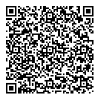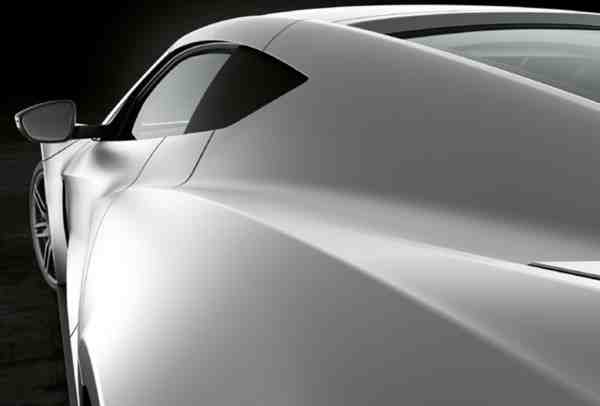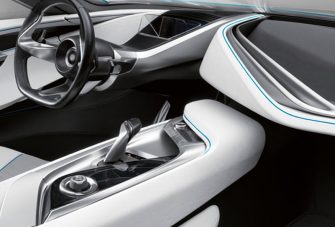
Frequently
Asked Questions
Answers putting you on the road to success.
- General Questions
- My Business Questions
- Headlight Restoration
- Color Enhancer For Paint
- Paint Touch-up
- Bio-life Automotive Products
- Leather
- Detailing
- 1. Dvelup Marketing Aids ?
Does Dvelup have any market aids for my business?
Yes. Check out our Perks & More Store. - 2. Mobile or Brick & Mortar ?
Do professionals usually set up a shop or prefer mobile service?
Both. Some businesses already have a shop for other services such as detail, tire, lube, tinting, etc. But many are mobile, servicing auto dealerships used car department, detail shops, body shops, and the public. - 3. Advertising HLR to car dealerships ?
Are free headlight restoration demo's a good way to advertise to used car dealerships?
Sure. However a more efficient approach, would be to have a demo light to carry with you. Approach the manager with a light half restored. You won't be denied the chance to show him your work because you will have it right there with you.
It will also save you much time from doing no pay demo's.To prepare a demo light find a corroded one from a salvage yard or one from a body shop that has been damage on the back side (one they will throw away). Mask off half of the light and restore just one side. Use a canvas bag to carry around so the restored side doesn't get scratched up while in transit.
.
- 4. Marketing Tips For Color Enhancer ?
Any suggestions on marketing Color Enhancer?
For a demo, treating half of a hood with CE and CE Shiner including any touch-up will really show the difference between before and after.
Instead of selling your service as a repair of individual spots, sell it as a treatment of all the painted surfaces. Using CE and CE Shiner all over.
Use treatment of plastics and satin surfaces as an up-sell to your paint treatment .
- 1. HL Coat Dries Streaky ?
Why did my HL Sealer/HL Coat dry streaky or with lines?
There are four reasons why Clear Wipe will dry this way.1. Hidden compound from polishing.
2. Applying to thin.
3. Excessive wiping.
4. HL Coat has thickened in container.
Below are more details on the 4 reasons:
1. Left over compound hidden application. This will usually begin to show as HL Coat dries and look like gritty streaks.
2. HL Coat should be applied generously. After wiping edges with corner of towel apply into HL Coat before proceeding down lens. The lens should be very wet with HL Coat.
3. HL Coat should be applied quickly and generously, areas or runs. Once it is applied it begins to dry so once applied discontinue wiping and allow time for it to level. Cooler weather will give plenty of time for HL Coat to be applied. As weather warms there is less time to apply.
4. HL Coat may accept small amounts of mineral spirits if it has not to far gone. The most common cause of thickening is untightened caps. For the best seal tightend thoroughly then rap bottom of cap tith electrical or teflon tape. Near freezing or below temperature will cause thickening. This is not due to solvent evaporation so thinning should not be done. Storing containers in warmer locations will relieve thickening.
- 2. HL Coat Dries Milky ?
Why did my HL Sealer/HL Coat dry milky?
Water or moister is your cause. The most common reason for this is hidden water around edges or under side of lens. The water is picked up in the towel during application. Thoroughly dry edges before applying HL Coat will solve the problem. - 3. Dust In My HL Coat ?
Will dust contaminate my HL Sealer/HL Coat before it dries?
Different types of coatings attract and hold dust particles differently due to static attraction and how viscid it is. Other spray on coatings can allow particles to be trapped under the coating.Our coating does very well not attracting air borne particles. One of our customers in Arizona said: In the event there is dust on lense. It can easily be removed by lightly rubbing some car wax over surface. (After lens has cured).
This is of course due to our coating being a wipe-on formula, which allows any particles to be only on the surface.
- 4. How Long Will HL Coat Last ?
Is there a guarantee on this product, it works really well I just wonder what to tell my customers when they ask "How long will it last?"?
Different types of coatings attract and hold dust particles differently due to static attraction and how viscid it is. Other spray on coatings can allow particles to be trapped under the coating.Our coating does very well not attracting air borne particles. One of our customers in Arizona said: In the event there is dust on lense, it can easily be removed by lightly rubbing some car wax over surface.(After lens has cured).
This is of course due to our coating being a wipe-on formula, which allows any particles to be only on the surface.
- 5. Should I wear gloves ?
I assume wearing protective gloves is a good idea; do you suggest technicians where gloves?
Yes. The chemicals will not immediately harm skin, however as with any paint related material gloves provide protection against long term effects.
- 6. Starting With 400 Grit?
Should I always start with 400 grit?
You can, but it really is not always necessary. It all depends on the severity of damage. Until you get more familiar with the varying degrees of damage you could test one spot on the lens and decide if that grit will quickly strip off the corrosion.
For Example: You examine a lens an believe it is not too severe but does have some pitting so you sand just one spot with 1000 grit. After you cleaned off the spot, you notice some of the corrosion did come off however the tiny pits are worse than you thought. So decide to sand the lens with 600 instead or even 400 if it's that bad. You want to remove the corrosion as quickly as possible on the first step. However with lighter damage you can start with a finer grit and avoid unnecessary sanding steps.
- 7. Cure Time?
How can I speed up curing of the HL Sealer?
Cure time is effected by climate temperature and humdiity. Higher temperatures and low humidity will give faster cure times.
Heat sources will speed curing. Turning on headlight, household hair dryer or heat gun can work. Care must be taken if using heat gun or other high heat sources as over heating can damage lens. Only use if you are confident that you will avoid damaging areas recieving heat.
After heating for a couple of minutes allow to cool before checking for tackiness. HL Sealer will still need some time after heating and cooling to get a surface dry.
The All new HL Lens Coat
HL Lens Coat is an air cure coating with a heat accelerating feature (HAF). If you need a faster cure take advantage of the HAF by applying a heat source. Any heat source such as summer sun, headlight high beams, hair dryer or heat gun will speed curing. Care should be taken when using an external heat source so as not to damage lens or surrounding parts.
Allow to cool for 2-3 minutes. When a lens is not sticky to the touch it is safe to drive.
NOTE: After the initial surface cure their is a full cure period. Allow 30 days before washing or waxing.
- 1. Color Enhancer & Touch Paint?
How Can I use Color Enhancer with touch-up paint?
On paint CE can minimize your time with scratch and chip repairs. CE is meant to be used on damage that has not penetrated into the basecoat color. CE creates a finish within the damage that allows the existing color to shin be through.
The best method to apply is as follows:Clean damages areas with a microfibre cloth and laquer thinner. Using a blue shop towel or other soft cloth rub small amounts of CE into damage. Wait for solvents to flash off. The wait time can be from seconds to several minutes. Much depends on temperature, sun or shade and color of car. To quick will pull the CE out and to late will make it hard to remove excess. After wait time return with a microfiber folded flat and using light pressure wipe log strokes over area. Wipe until area shines, however avoid over wiping. The idea is to remove the excess CE while leaving as much as possible in scratch. Look from different angle to make sure no excess CE is left. Vehicle should not be wash for 2-4 hours after application. After these steps are complete, tech can proceed to touch up deeper damage with color.
Different touch methods can be used with CE to achieve great results. (Always test a small area to see how well CE works with the basecoat brand you use.) For instance when tiny chips cover the front of a car. Clean area with a microfiber towel dampened with lacquer thinner. Then using a blue shop towel or a small t-shirt cloth rub and dab basecoat into chips. (Adding some Adhesion promoter to basecoat may help bond to damage). Then wrap a soft block tightly with a t-shirt cloth. Make sure bottom side is smooth with no wrinkles. Dampen bottom side with CE. After paint has dried rub area to remove excess. If paint seems stubborn to remove mist a small amount of wax and grease remover (paint prep solvent) from a spray bottle over area and immediately rub again. To much Remover will pull paint out of chips. After all dried paint is removed use a dry, clean t-shirt cloth and block to clean off the excess paint and CE. By removing this excess with a clean cloth save a good microfiber. When mixing color adding a small amount of CE may make it easier to remove.
For deep scratches, we would suggest cleaning with lacquer thinner and microfiber, applying CE, shine with microfiber, apply color with bondo spreader (plastic razor blade might work), remove excess with wax and grease remover, if necessary after paint dries apply more CE and shine. This method requires a spreader to be free of nicks. Check carefully, if you feel anything rub edge with fine sandpaper (1500 grit). With a smooth edge you can drag paint into scratch or chip with out leaving any outside of the scratch, except at edges of spreader and where you stop. So when you remove the excess you wont need to wipe over the scratch.
To achieve high gloss results with larger damage, check out the Excess Remover from our Paint Touch-up Line.
- 2. Should I wear gloves ?
I assume wearing protective gloves is a good idea; do you suggest technicians where gloves?
Yes. The chemicals will not immediately harm skin, however as with any paint related material gloves provide protection against long term effects.
- 1. Color Enhancer & Touch Paint?
How Can I use Color Enhancer with touch-up paint?
On paint CE can minimize your time with scratch and chip repairs. CE is meant to be used on damage that has not penetrated into the basecoat color. CE creates a finish within the damage that allows the existing color to shin be through.
The best method to apply is as follows:Clean damages areas with a microfibre cloth and laquer thinner. Using a blue shop towel or other soft cloth rub small amounts of CE into damage. Wait for solvents to flash off. The wait time can be from seconds to several minutes. Much depends on temperature, sun or shade and color of car. To quick will pull the CE out and to late will make it hard to remove excess. After wait time return with a microfiber folded flat and using light pressure wipe log strokes over area. Wipe until area shines, however avoid over wiping. The idea is to remove the excess CE while leaving as much as possible in scratch. Look from different angle to make sure no excess CE is left. Vehicle should not be wash for 2-4 hours after application. After these steps are complete, tech can proceed to touch up deeper damage with color.
Different touch methods can be used with CE to achieve great results. (Always test a small area to see how well CE works with the basecoat brand you use.) For instance when tiny chips cover the front of a car. Clean area with a microfiber towel dampened with lacquer thinner. Then using a blue shop towel or a small t-shirt cloth rub and dab basecoat into chips. (Adding some Adhesion promoter to basecoat may help bond to damage). Then wrap a soft block tightly with a t-shirt cloth. Make sure bottom side is smooth with no wrinkles. Dampen bottom side with CE. After paint has dried rub area to remove excess. If paint seems stubborn to remove mist a small amount of wax and grease remover (paint prep solvent) from a spray bottle over area and immediately rub again. To much Remover will pull paint out of chips. After all dried paint is removed use a dry, clean t-shirt cloth and block to clean off the excess paint and CE. By removing this excess with a clean cloth save a good microfiber. When mixing color adding a small amount of CE may make it easier to remove.
For deep scratches, we would suggest cleaning with lacquer thinner and microfiber, applying CE, shine with microfiber, apply color with bondo spreader (plastic razor blade might work), remove excess with wax and grease remover, if necessary after paint dries apply more CE and shine. This method requires a spreader to be free of nicks. Check carefully, if you feel anything rub edge with fine sandpaper (1500 grit). With a smooth edge you can drag paint into scratch or chip with out leaving any outside of the scratch, except at edges of spreader and where you stop. So when you remove the excess you wont need to wipe over the scratch.
To achieve high gloss results with larger damage, check out the Excess Remover from our Paint Touch-up Line.
- 2. Should I wear gloves ?
I assume wearing protective gloves is a good idea; do you suggest technicians where gloves?
Yes. The chemicals will not immediately harm skin, however as with any paint related material gloves provide protection against long term effects.
- 3. How Does Precision Pen Work?
How Does Precision Pen Work?
The working components of the Precision Pen are the tip, reservoir, pressure tube.
To use the pen follow the below steps:
1. Pull the end of the pressure tube off the reservoir.
2. Put a few drops of paint into the top of the reservoir. Avoid filling to the top to keep pressure tube clean.
3. Reattach the Pressure tube.
4. Place the tip into the chip and gently squeeze the pressure tube between thumb and first finger.
5. The amount of paint applied is controlled by the pressure exserted on the pressure tube.
TRANSLATEDVELUP.COM

Dvelup on your
Smart Phone
Scan QR Code with
QR Code Reader




